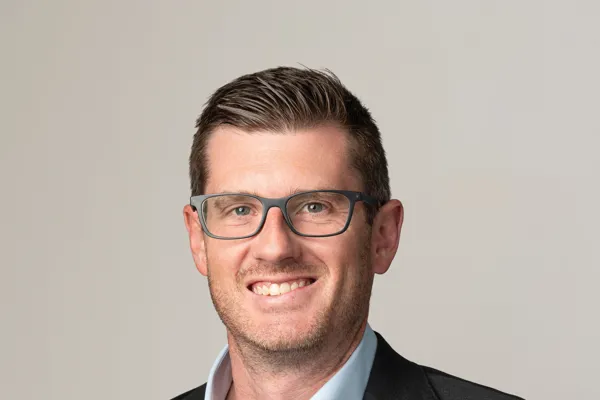
As one of Australia’s biggest asset managers, Perpetual has a long history of active ownership. Here Nathan Hughes, co-portfolio manager for Perpetual’s Strategic Capital Fund, shares an example showing how our experience in investing can help improve returns for investors.
- Perpetual engages directly with investee companies
- This example shows the results of working with Insurance Australia Group
- Find out about the Perpetual Strategic Capital Fund
As one of Australia’s leading general insurers, Insurance Australia Group (ASX: IAG) operates several different brands in the retail consumer and commercial insurance markets.
In the consumer segment, IAG enjoys a market-leading position in home and motor policies, with strong brands such as NRMA and RACV. The company also distributes through partner channels.
In commercial lines, performance has been challenging with reserve top-ups and avoidable errors, such as the recent business interruption scare and outstanding litigation with Greensill Group.
New management has made steady progress in underwriting discipline, pricing, and improving performance of this division.
IAG has been a long-term holding in several Perpetual funds – including Perpetual Strategic Capital Fund since its inception in 2023.
Under our investment thesis, IAG possessed a very strong core franchise. However earnings – which had been impacted by increased perils costs and claims inflation due to supply chain disruption – were not representative of the true earnings power of the business.
IAG demonstrates several favourable characteristics:
- Strong consumer brands
- High policy-holder retention
- Long-term reinsurance arrangements with high-quality counterparties
- Greater buying power than smaller competitors in reinsurance and supply chain
- Market-leading position in New Zealand
- Improving performance in commercial lines
- High returns on invested capital
As one of the largest investors in IAG – and supportive of its equity raise in 2020 – we have been consistent, active owners of the stock.
We are in constant engagement with board and management on a range of matters, including three key areas of focus:
- An encouragement to be disciplined on pricing and risk selection given the competitive strengths of the company’s market position.
- We have presented to the company its history of capital allocation, with a view to ensuring any potential acquisitions are strategically sound while meeting required hurdles from a returns perspective. This was not a “shock and awe” activism exercise – it was consistent, thoughtful and collaborative engagement. IAG was receptive and engaged in meaningful discussion, knowing we were a long-term, supportive holder.
- Our view on capital allocation is not limited to mergers and acquisitions – it also encapsulates reinsurance as a means of increasing capital efficiency. We have long discussed with IAG the prospect of increasing quota share reinsurance levels (within reason, and cognisant of any cliffs upon renewal).
Strong earnings
In June, IAG announced it expected annual earnings at the upper end of previously guided estimates, implying a very favourable margin outcome for the second half (indicative of forward-looking momentum into future years).
The company also announced significant reinsurance transactions. In effect, IAG decided to “give back” some of this improved performance in exchange for reduced earnings volatility moving forward.
This has been achieved in two ways:
Firstly, the company has purchased an Adverse Development Cover (ADC), or protection against a deterioration in long-tail commercial insurance reserves.
Long-tail policies provide cover for longer than 12 months, and in some cases over many years. This exposes IAG to greater variability in claims outcomes – for example, litigation-driven inflation risks or simply the delayed emergence of an unforeseen problem.
This protection provides IAG cover of $650 million on existing reserves of $2.5 billion.
The second component of the program is a natural perils (weather-driven claims) reinsurance arrangement to provide an additional $680 million of protection to IAG each year, designed to cap natural perils costs under 90% of all modelled scenarios.
The cost of this protection is flat for the five-year term, which results in a disproportionate margin impact in FY25 and a reducing impost in the outer years.
Natural perils have been a key challenge for the company due to weather volatility and inflation in labour and materials costs for damage repair.
This remains an ongoing challenge for the insurance industry given the prospect of changing weather patterns in an evolving climate. Protecting against this risk is a pragmatic approach.
Less downside risk, further upside potential
The combined effect of these transactions is, under most scenarios, significantly reduced earnings volatility with less downside risk.
IAG also stands to gain back some of the upside if claims are favourable to modelled outcomes.
Despite the cost of this cover, the company has maintained its through-the-cycle margin target.
The transactions will also release capital of $350 million and, therefore, returns on the equity employed should lift.
Lastly, we believe there is further opportunity in cost ratios.
IAG has done a good job of onboarding new enterprise platforms which are having tangible results in digital engagements, retention and efficiency gains.
When fully bedded down, we believe this will allow expense ratios to decline and, in turn, insurance margins to improve further.
The signs are positive in this regard.
IAG is an example of where consistent engagement with a company – coupled with sound decision-making from company management and directors – can aid in investment outcomes over an extended timeframe.
At the time of writing, the stock has risen 23 per cent since fund’s inception (excluding dividends), and we believe further upside remains.

